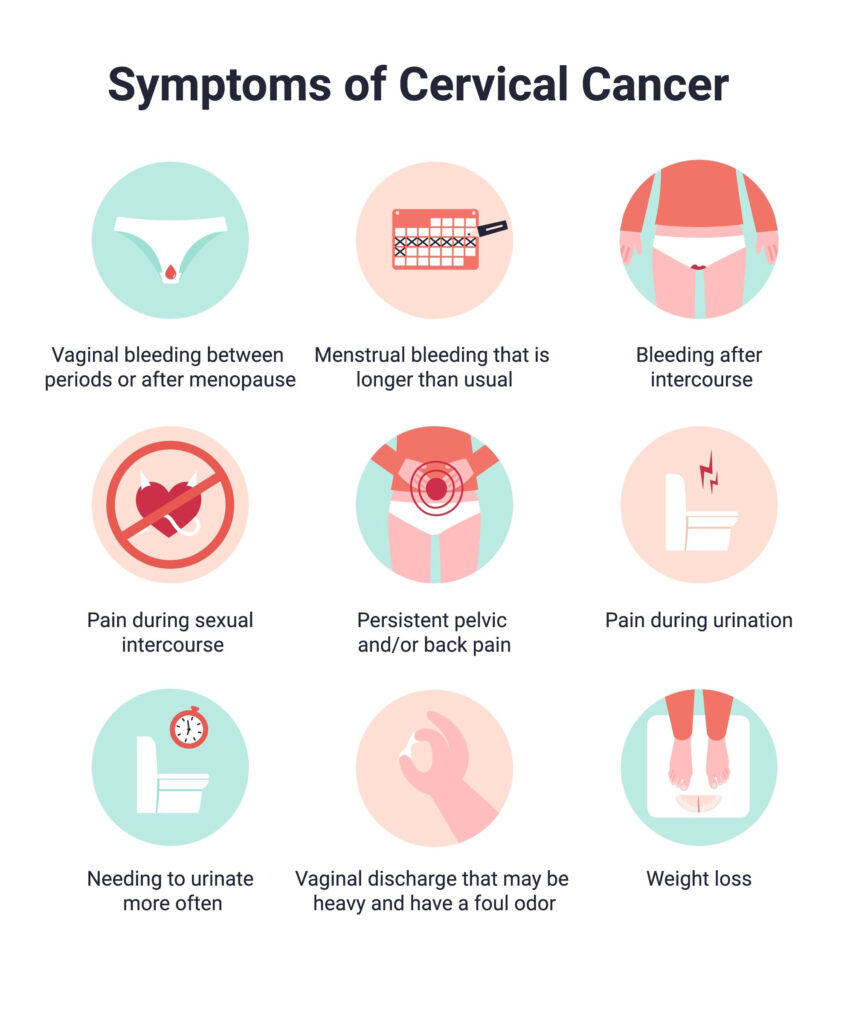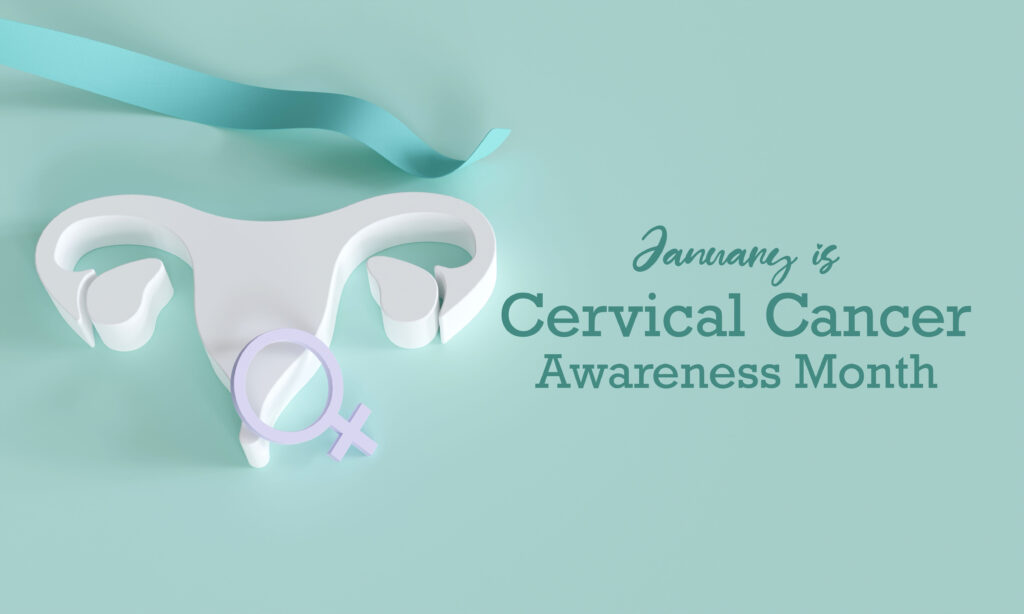January is Cervical Cancer Prevention Month
Welcome to the month of January, where we shine a spotlight on an important topic – Cervical Cancer Prevention! As we kick off the new year, it’s crucial to prioritize our health and take proactive steps to protect ourselves. Cervical cancer is a serious disease that affects thousands of women each year, but the good news is that it can be prevented. In this blog post, we’ll explore how early intervention and HPV vaccination have significantly reduced the number of cases in young women. So let’s dive in and learn more about how you can safeguard your cervical health for years to come!
Prevention of Cervical Cancer starts early in life
Prevention of cervical cancer starts early in life, and it’s important to instill this knowledge in young girls as they embark on their journey towards womanhood. Educating them about the risks and emphasizing the importance of regular screenings can set a strong foundation for a lifetime of cervical health.
One crucial aspect of prevention is HPV vaccination. This remarkable advancement has not only reduced the number of cases but also prevented precancers of the cervix in young women. The protection provided by HPV vaccines lasts a long time, offering peace of mind as they navigate through adolescence and adulthood.
According to recent statistics, HPV cancers and genital warts have dropped significantly among teen girls and young adult women. This is an encouraging trend that highlights the effectiveness of early intervention strategies.
To ensure maximum protection, it is recommended by the CDC that 11- to 12-year-olds receive two doses of the HPV vaccine six to twelve months apart. By starting early, we can create a shield against potential future risks.
Furthermore, regular pap smear check-ups play a vital role in decreasing both incidence rates and mortality rates from cervical cancer. These screenings allow healthcare professionals to detect any abnormalities or signs of cervical dysplasia – the precursor to cervical cancer – at an early stage when treatment options are more effective.
Preventing cervical cancer starts early in life by educating young girls about its risks and implementing preventive measures such as HPV vaccination and regular pap smears. By taking proactive steps towards safeguarding our cervical health from an early age, we can empower ourselves with knowledge while reducing our risk factors for this disease. Let us all join hands in spreading awareness during Cervical Cancer Prevention Month!
HPV vaccination has also reduced the number of cases of precancers of the cervix in young women.
HPV vaccination has been a game-changer in the fight against cervical cancer. Not only has it proven effective in preventing HPV infections, but it has also significantly reduced the number of precancers of the cervix in young women.
Studies have shown that HPV vaccines, such as Gardasil 9 for Serotypes 16 and 18, provide long-lasting protection against high-risk HPV strains responsible for most cases of cervical cancer. This means that by getting vaccinated early on, young women can greatly reduce their risk of developing precancerous lesions that could eventually lead to cervical cancer.
The impact of HPV vaccination is truly remarkable. According to the Centers for Disease Control and Prevention (CDC), HPV cancers and genital warts have dropped by an impressive 88% among teen girls and 81% among young adult women since the introduction of these vaccines.
To maximize the benefits of HPV vaccination, it is important to follow the CDC’s recommendations. They advise that 11- to 12-year-olds receive two doses of the vaccine with a gap of six to twelve months between them. Catch-up vaccinations are also available for individuals who did not receive the vaccine during this age range.
By ensuring widespread access to HPV vaccines and promoting their use, we can continue making significant strides towards eliminating cervical cancer as a major health concern. It’s crucial that parents, healthcare providers, and communities come together to prioritize prevention through vaccination.
Remember, prevention starts early in life – so let’s protect our future generations from this preventable disease!
The protection provided by HPV vaccines lasts a long time
The protection provided by HPV vaccines lasts a long time, ensuring that individuals are safeguarded against the risks associated with the virus. When it comes to preventing cervical cancer and other HPV-related diseases, vaccination plays a crucial role. Research has shown that HPV cancers and genital warts have dropped significantly among young women who have received the vaccine.
One of the most widely used vaccines is Gardasil 9, which protects against several high-risk types of HPV, including serotypes 16 and 18. These strains are responsible for approximately 70% of cervical cancers worldwide. By targeting these specific strains, Gardasil 9 provides long-lasting protection against potential infections.
It is recommended by experts at CDC that individuals receive two doses of the HPV vaccine between ages 11 and 12 to ensure optimal protection. The second dose should be administered six to twelve months after the first one. This early intervention helps create a strong foundation for future health.
By vaccinating at an early age, we can not only prevent cervical cancer but also reduce the risk of other related conditions such as genital warts or certain types of throat and anal cancers caused by HPV infection.
Getting vaccinated is a proactive step towards protecting oneself from this common sexually transmitted infection (STI). It’s important to note that even those who have been previously infected with some types of HPV can still benefit from vaccination since it covers multiple strains.
Opting for an effective preventive measure like receiving an HPV vaccine offers long-lasting protection against various strains of human papillomavirus. Taking this proactive approach helps minimize the risk factors associated with cervical cancer and other related diseases caused by persistent infection with high-risk strains of HPV.
HPV cancers and genital warts have dropped 88% among teen girls and 81% among young adult women
HPV cancers and genital warts have seen a significant decline in recent years, bringing hope to millions of young women. According to the Centers for Disease Control and Prevention (CDC), cases of HPV-related cancers have dropped by an impressive 88% among teenage girls and 81% among young adult women.

This remarkable decrease can be attributed to the widespread availability of HPV vaccines, such as Gardasil 9. These vaccines provide protection against the most common types of HPV that cause cancer, including serotypes 16 and 18. By vaccinating at-risk populations early on, we are taking an important step towards preventing future cases of cervical cancer.
It’s worth noting that the protection provided by these vaccines lasts for a long time, further reducing the likelihood of developing HPV-related health issues later in life. This emphasizes the importance of getting vaccinated during adolescence or early adulthood.
However, it’s crucial not to solely rely on vaccination alone for prevention. Safe sex practices remain essential in reducing the risk of contracting HPV and other sexually transmitted infections. Using male or female condoms consistently can significantly decrease transmission rates.
Regular pap smear check-ups also play a vital role in detecting any abnormalities early on before they progress into cervical cancer. Annual screenings allow healthcare professionals to identify precancerous cells or lesions caused by persistent HPV infections promptly.
The declining rates of both HPV cancers and genital warts demonstrate the power of preventative measures like vaccination and regular screening. By continuing efforts to raise awareness about safe sex practices, encouraging routine vaccinations, and promoting regular check-ups, we can continue this positive trend toward decreasing cervical cancer rates even further.
CDC recommends that 11- to 12-year-olds receive two doses of HPV vaccine 6 to 12 months apart
The Centers for Disease Control and Prevention (CDC) strongly recommends that 11- to 12-year-olds receive two doses of the HPV vaccine, with a gap of 6 to 12 months between each dose. This recommendation is based on extensive research and scientific evidence that demonstrates the effectiveness of the vaccine in preventing cervical cancer.
By vaccinating adolescents at this age, it ensures they are protected before they become sexually active and potentially exposed to the human papillomavirus (HPV). The CDC emphasizes the importance of early vaccination as it provides optimal protection against HPV-related cancers and diseases.
https://www.cdc.gov/vaccines/vpd/hpv/public/index.html#:~:text=Three%20HPV%20vaccines%E2%80%949%2Dvalent,that%20cause%20most%20HPV%20cancers.
It is important to note that the HPV vaccine is safe and has undergone rigorous testing before being made available. It has been proven effective in preventing infection from several high-risk types of HPV, including those responsible for most cases of cervical cancer.
By following CDC guidelines and ensuring that young individuals receive these vaccinations, we can significantly reduce their risk of developing cervical cancer later in life. Vaccination not only protects individuals but also contributes to reducing overall rates of cervical cancer within our communities.
Talk to your healthcare provider about getting your child vaccinated against HPV. Together, we can take a proactive approach towards preventing cervical cancer and promoting better health outcomes for future generations.
The pap smear is responsible for decreasing the incidence of and mortality rates from cervical cancer.
The pap smear, also known as a Pap test, is a crucial tool in the fight against cervical cancer. This simple screening procedure has been instrumental in reducing the incidence and mortality rates associated with this deadly disease.
By regularly undergoing a pap smear, women can detect any abnormal changes in their cervical cells at an early stage. These abnormalities are often caused by the human papillomavirus (HPV), which is the primary risk factor for developing cervical cancer. Detecting these changes early allows healthcare providers to intervene and treat them before they progress into cancer.
Not only does the pap smear help identify precancerous lesions, but it also helps monitor women who have already been diagnosed with cervical dysplasia or cancer. Regular screenings allow doctors to closely monitor the progression of these conditions and adjust treatment plans accordingly.
It’s important to note that while vaccines like Gardasil 9 offer protection against certain HPV strains, they do not eliminate the need for regular pap smears. Vaccination should be seen as an additional layer of prevention alongside routine screenings.
Cooper DB, McCathran CE. Cervical Dysplasia. [Updated 2023 Jul 10]. In: StatPearls [Internet]. Treasure Island (FL): StatPearls Publishing; 2023 Jan-. Available from: https://www.ncbi.nlm.nih.gov/books/NBK430859/
Remember, prevention is key when it comes to managing cervical cancer. By staying vigilant about our health and scheduling regular check-ups that include a Pap test, we can continue making significant strides in reducing both incidence rates and mortality from this preventable disease.
Cervical dysplasia is the precursor to cervical cancer. It is caused by the persistent infection of the human papillomavirus (HPV) into the cervical tissue.
Cervical dysplasia is a serious condition that can lead to cervical cancer if left untreated. It is crucial for women to be proactive about their health and take the necessary steps to prevent cervical cancer. This includes getting vaccinated against HPV, practicing safe sex, and regularly scheduling pap smear check-ups.
By receiving the HPV vaccine, young girls can significantly reduce their risk of developing cervical cancer later in life. The protection provided by these vaccines lasts a long time, offering peace of mind for both parents and individuals.
In addition to vaccination, practicing safe sex through the use of male and female condoms can also help prevent the transmission of HPV. Taking these precautions not only protects against cervical cancer but also reduces the risk of other sexually transmitted infections.
Furthermore, regular pap smear check-ups are vital for detecting any abnormalities or precancerous cells in the cervix at an early stage. These screenings have played a significant role in decreasing both incidence rates and mortality rates from cervical cancer.
It’s important to remember that prevention starts early in life. By taking action now, we can protect ourselves and future generations from the devastating effects of cervical cancer. Together, let’s raise awareness during Cervical Cancer Prevention Month and make sure every woman has access to lifesaving information and resources.
Remember: knowledge is power when it comes to our health – let’s stay informed and prioritize our well-being!
This article is written by Nancy L Kimmel, MSN FNP BC,
Nancy L Kimmel is a licensed Nurse Practitioner in the State of Michigan.
Nancy L. Kimmel has a PhD in Environmental Engineering, as well as being the Administrator and educational director at Phlebotomy Career Training in Dearborn, MI.

Nancy L. Kimmel obtained her PhD in Environmental Engineering in 2002, then went on to teach Physics and Mechanical Engineering at Lawrence Technological University, Henry Ford College and Oakland University. She obtained her Associate in Nursing from Henry Ford College and then went on to earn her Master Degree as a Family Nurse Practitioner and became Board Certified working as a licensed FNP in the State of Michigan. She then went on to Medical School where she is now in her 3rd year, and is also in the process of obtaining her Doctorate in Nursing Practice through Chamberlin University. She has authored the NET Study Guide, as well a several books on subjects of Math, ECG/EKG and Phlebotomy. She holds a patent on an Air Filter through the U.S. Patent Office.


